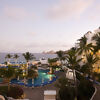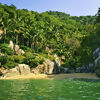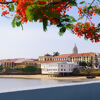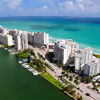15 Nights | 15-DAY PANAMA CANAL FROM LOS ANGELES
About Rena, Norway
You will visit the following 10 places:

Cabo San Lucas
Cabo San Lucas, commonly called Cabo in American English, is a city at the southern tip of the Baja California Peninsula, in the Mexican state of Baja California Sur. Cabo San Lucas together with San José del Cabo is known as Los Cabos. Cabo is a varied destination that captures the essence of Baja Peninsula in its many resorts, championship golf courses, world-class dining and amazing outdoor activities. The city also houses a range of wildlife including rays, sharks, birds like eagles and a range of fish like mahi-mahi (dorado) and stripe marlin. For much of its history, Cabo was a sleepy, remote fishing port which was generally accessed either by ship or a three-hour drive from La Paz. In 1977, the airport to the north of San Jose del Cabo was expanded to handle jet aircraft and international flights, thereby launching the transformation of Cabo into one of the most popular resort destinations in Mexico.

Chiapas
Chiapas, officially the Free and Sovereign State of Chiapas, is one of the 31 states that, with the Federal District, make up the 32 federal entities of Mexico. It is divided into 122 municipalities and its capital city is Tuxtla Gutiérrez. Located in Southwestern Mexico, Chiapas has a coastline along the Pacific Ocean to the south. With a humid, tropical climate, Chiapas is home to the ancient Mayan ruins of Palenque, Yaxchilán, Bonampak, and Chinkultic. It is also home to one of the largest indigenous populations in the country with twelve federally recognized ethnicities. Much of the state’s history is centered on the subjugation of these peoples with occasional rebellions. The last of these rebellions was the 1994 Zapatista uprising, which succeeded in obtaining new rights for indigenous people.

Puerto Vallarta
Puerto Vallarta is a Mexican beach resort city situated on the Pacific Ocean's Bahía de Banderas. The 2010 census reported Puerto Vallarta's population as 255,725 making it the fifth largest city in the state of Jalisco, and the second largest urban agglomeration in the state after the Guadalajara Metropolitan Area. The City of Puerto Vallarta is the government seat of the Municipality of Puerto Vallarta which comprises the city as well as population centers outside of the city extending from Boca de Tomatlán to the Nayarit border (the Ameca River). Around the Bay, marvellous beaches, lush jungles and sparkling waterfalls offer many opportunities for the adventurous while five star resorts, world-class shopping and gourmet restaurants satisfy even the most sophisticated traveller. Stretching from the south end of Old Town to central downtown, a newly extended and refurbished boardwalk along the ocean, called the Malecon, passes by any number of shops, restaurants, and hotels, and often plays host to mimes, break-dancers, clowns and artists.

Panama
Panama officially the Republic of Panama, is known as the "Crossroads of the Americas" due to its privileged position between North and South America. It has the second largest economy in Central America and is also the fastest growing economy and largest per capita consumer in Central America. The ease of travel and wide array of experiences make Panama one of the most attractive emerging tourism destinations in the world. In just one week, visitors can enjoy two different oceans, experience the mountains and rainforest, learn about native cultures and take advantage of vibrant urban life. It's significant capital, Panama City, is a modern, sophisticated metropolis that resembles Miami and has established commerce, arts, fashion and dining.

Huatulco
Santa María Huatulco is a town and municipality in Oaxaca in south-western Mexico. It is part of the Pochutla District in the east of the Costa Region. The meaning of Huatulco, or Guatulco Coatulco is, "where they worship the tree", referring to an ancient legend. Its ecosystem is lowland deciduous and includes mahogany, cedar, cashew and many other species of tree. Wildlife includes squirrel, opossum, skunk, raccoon, coati, ringtail, armadillos, ocelots and white-tailed deer. With many stunning beaches, as well as ecological reserves that contain diverse nesting birds and reptiles, the municipality is also the home of Huatulco National Park. The area is served by Bahías de Huatulco International Airport.

Los Angeles
Los Angeles, Spanish for "The Angels", is the most populous city in California and the second most populous in the United States, with a population of 4.06 million on a land area of 498.3 square miles (1,290.6 km2). It is the focal point of the larger Los Angeles-Long Beach Riverside combined statistical area, which contains nearly 17.8 million people. This makes it the 12th most populous metropolitan area in the world. Los Angeles is also the seat of Los Angeles County, the most populated and one of the most multicultural counties in the United States. The city's inhabitants are referred to as "Angelenos".

Miami
Miami is a major city located on the Atlantic coast in southeastern Florida and the county seat of Miami-Dade County, the most populous county in Florida and the eighth-most populous county in the United States with a population of 2,500,625. The 42nd largest city in the United States, with a population of 433,136, it is the principal, central, and most populous city of the South {Florida} metropolitan area, the most populous metropolis in the Southeastern United States. According to the US Census Bureau, Miami's metro area is the seventh most populous in the United States, with an estimated population of 5,547,051 in 2009.

Cartagena
Cartagena is Colombia's most famous tourist destination on the Caribbean coast. The city is renowned for its colonial and colourful architecture. With a tropical climate, the city is also a popular beach destination. The city was founded on June 1, 1533, and named after Cartagena, Spain, itself after the original Carthage in Tunisia. However, settlement in this region around Cartagena Bay by various indigenous people dates back to 4000 BC. During the colonial period Cartagena served a key role in administration and expansion of the Spanish empire. It was a center of political and economic activity due to the presence of royalty and wealthy viceroys. In 1984 Cartagena's colonial walled city and fortress were designated a UNESCO World Heritage Site.

Puerto











